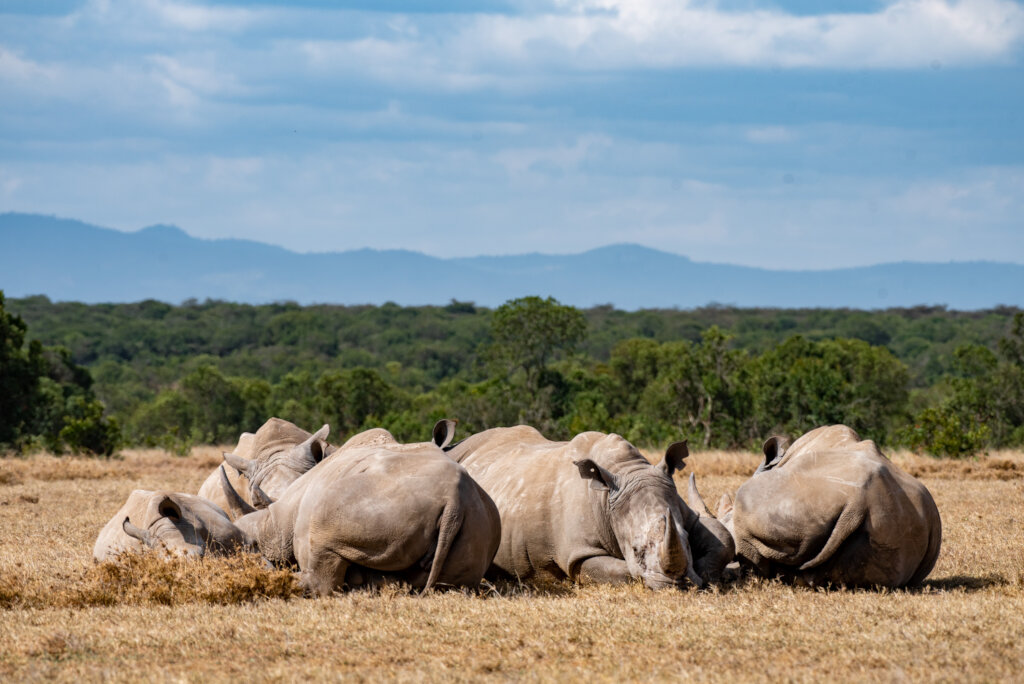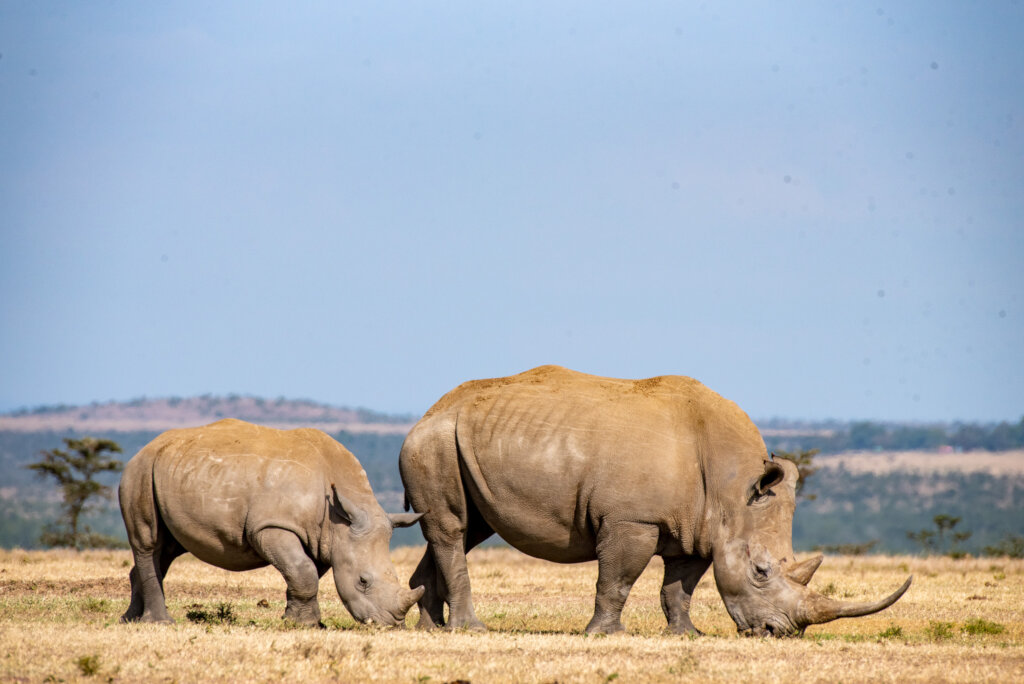By Amber Thacker | Project Leader
After over two years of financial insecurity resulting from the Covid-19 Pandemic, we are now faced with another devastating challenge: drought.
Kenya is currently tackling the worst drought in forty years. Here on Ol Pejeta, many of our dams have turned to dust and water levels in the Ewaso Ng'iro River are alarmingly low.
The prolonged dry spell – and now drought - is having a devastating impact on our wildlife, including the world’s rarest rhinos, Najin and Fatu.
Little Grass for Najin and Fatu
In a recent assessment, our Ecological Monitoring Unit (EMU) concluded that the average biomass is below the recommended minimum threshold. Grass is particularly poor in Najin and Fatu’s large enclosure. Our rangers have been working hard to reduce competition for food within their enclosure by driving warthogs and common zebras out into the main Conservancy. This is a lengthy exercise, which will need to be repeated several times. Once complete, Najin and Fatu will have exclusive access to the little grass available.
However, this is not sufficient, and we are keeping your favorite pair healthy by providing supplemental hay, carrots and nutritional pellets. Our rhino caregivers also had to begin supplemental feeding for Ariemet and Mojo (the potential surrogates for the northern white rhino recovery program) and Ouwan (the teaser bull).
We desperately hope that the short rains will arrive in October and that the grass will bounce back, providing much needed food and water for Najin, Fatu and the surrogates.
Resilient Black Rhinos
Our eastern black rhino population - the largest sub-population in the world - is booming. We have welcomed fourteen new-borns to the world since the start of the year! This is a record – a testament to your generous support - and we hope to welcome more calves between now and the end of December.
Fortunately, the bushes and trees that black rhinos feed on are quite resilient and have not yet been heavily impacted by the arid conditions. However, in extreme cases of drought, elephants shift their diet to trees, which could impact our black rhino population. Our Ecological Monitoring Unit are monitoring the situation closely.
Southern White Rhinos
Our southern white rhino population continues to grow, and we have had three births this year so far. This brings our total population to 42!
Ear Notching Called-off
Ear notching is an essential tool in rhino conservation and is in-line with Kenya’s black rhino action plan. Small notches are made in a unique pattern on each rhino’s ear, to help identify them in the wild. The exercise is managed by a team of experts and requires extensive planning, approval and equipment including a helicopter. Our ear notching exercise planned for July/August, with the Kenyan Wildlife Service was cancelled because we were concerned that rhinos waking up from the procedure would struggle to find available water supplies. This will be rearranged once the situation improves and water supplies have been restored.
Thank You
You have been by our side through every challenge, and we cannot express how grateful we are. Thanks to your continued generosity, we are able to care for and protect over 200 rhinos that roam the plains of Ol Pejeta Conservancy and a myriad of other species that live among them.
A very warm ASANTE SANA (thank you) from Ol Pejeta!
Project reports on GlobalGiving are posted directly to globalgiving.org by Project Leaders as they are completed, generally every 3-4 months. To protect the integrity of these documents, GlobalGiving does not alter them; therefore you may find some language or formatting issues.
If you donate to this project or have donated to this project, you can recieve an email when this project posts a report. You can also subscribe for reports without donating.
Support this important cause by creating a personalized fundraising page.
Start a Fundraiser
